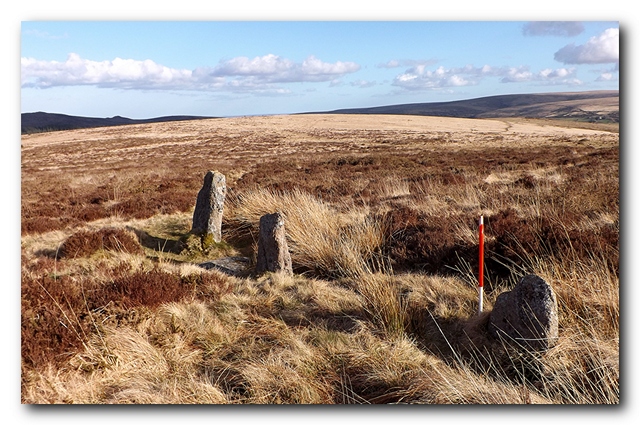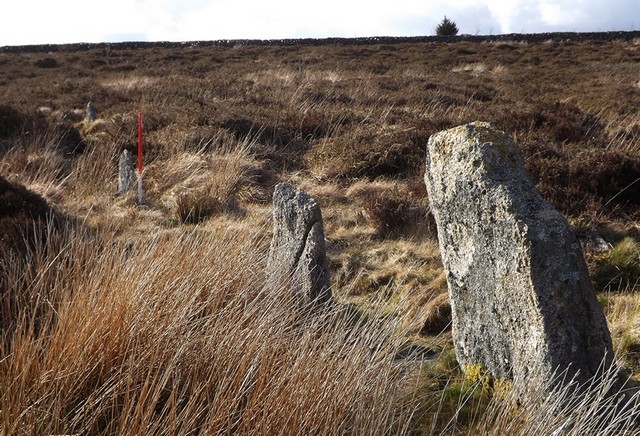South eastern length of the alignment. View from the west (Scale 1m).
A double stone row measuring 164m long, including at least 26 mainly medium, but with some small-sized stones and one large orthostat situated on a south facing slope. The WNW end of the row is denoted by a small cairn and standing stone (2.65m high) which was re-erected in 1893 and again in 1911. Excavation of the cairn revealed considerable quantities of charcoal. The row is orientated ESE to WNW and stands close to another stone row.
Location
| England Devon Dartmoor SX 65222 75393 Lat 50.5626376 Long -3.904344444 |
Map showing the location of Laughter Tor 1 stone row.
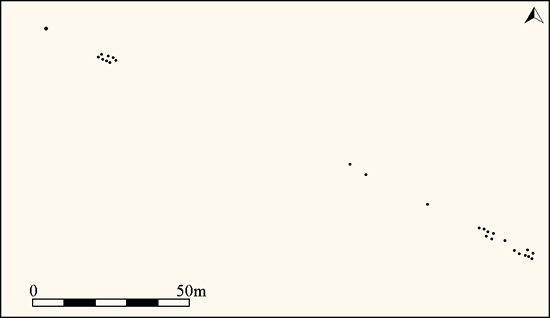
Simplified plan of Laughter Tor 1 stone alignment (Source: Butler, J., 1991, 59).
Characteristics
| Type: Double | Length: 164m |
| No. of stones: 26 | Size of stones: Small, medium and large |
| Orientation: 112° | Altitude: 393m |
| Upper end: Pillar and cairn | Lower end: – |
| Straight (Yes or No) : No | Sea View: Yes |
| Context: Stone alignment and prehistoric field system | |
| Notes: | |
Other Information
| Public Access: Yes |
| Land Status: National Park |
| Scheduled Ancient Monument: Yes |
Identification
Category: Plausible. No doubts have been expressed regarding the prehistoric interpretation of this row.
Typology
This stone row is of Type D12. Information on this form of stone row and other rows of this type is available here.
Photographs

A large monolith denotes the north western end of the stone row. View from north (Scale 1m).

The double row leading away from the terminal pillar. View from south east (Scale 1m).

The south eastern length of the row. View from north (Scale 1m).

The southern end of the row is most visually impressive. View from the north east (Scale 1m).
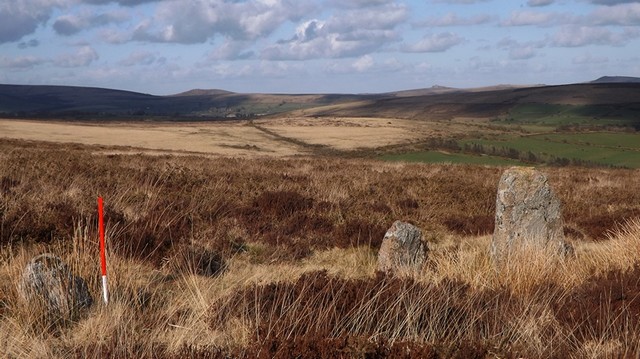
The stones forming the southern length of the row. View from south west (Scale 1m).
Looking north west along the southern length of the row. View from south east (Scale 1m).
Landscape Reveals
The Laughter Tor 1 stone row is positioned on a gently sloping east facing hillside with the upper end positioned at the point where views to the north are suddenly revealed. For much of its length views to the north are restricted by the rising ground and it is only as you reach the top that the landscape beyond appears. These types of reveal are a common characteristic of the longer stone rows and therefore very likely to deliberate and functional.
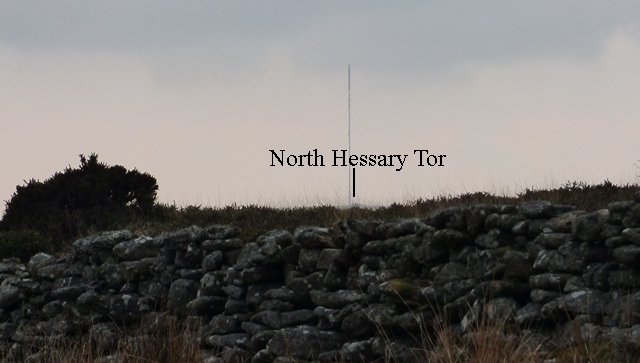
Walking up the row, North Hessary Tor is revealed at SX 65280 75363 (64m from the top).

As you continue to walk up the row North Hessary Tor rapidly emerges from the rising ground. This photograph was taken 18m further along the row.
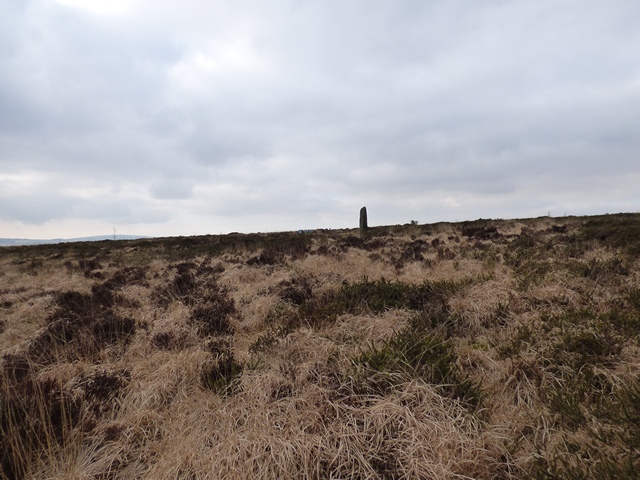
Looking north west along the row from the same point as the photograph above. At this point 44m from the top of the row, the rising ground blocks views to the north.

19m from the upper end views towards the north are still restricted.
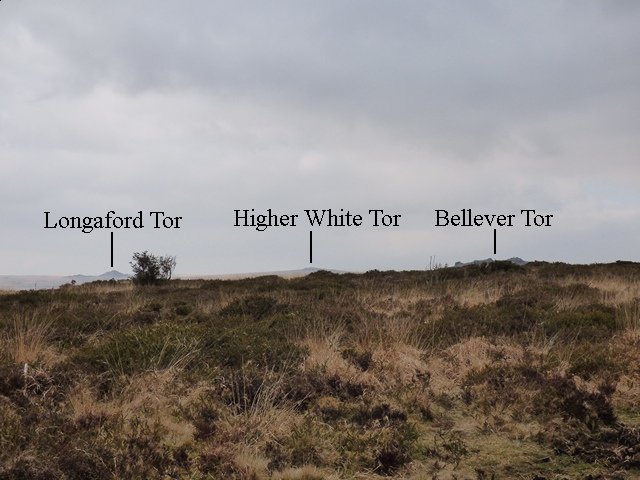
As you approach the longstone at the top of the row three tors suddenly emerge. The upper end of the row is sited at the limit of visibility to these tors. It seems highly unlikely that this is a coincidence, particularly given that this is a characteristic of most long stone rows.
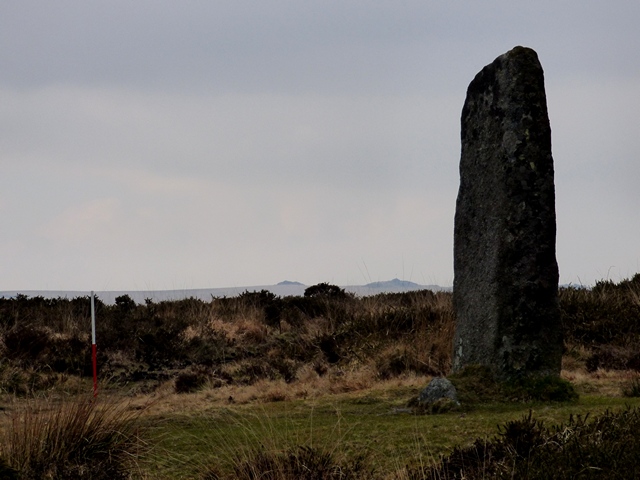
The longstone at the upper end of the row is at the limit of visibility for a number of distinctive tors.
Access Information
Car parking is available at SX 64577 74591. From here take the bridleway north westward for about 900m. Take the path towards the tall stone at the upper end of the row. The Laughter Tor 2 row is situated very close to the upper end of Laughter Tor 1 row and depending on vegetation conditions may be visible.
Online Resources
Megalithic Portal Modern Antiquarian PastScape Historic Environment Record
Prehistoric Monuments of Dartmoor Prehistoric Dartmoor Walks
Other References
Burl, A., 1993, From Carnac to Callanish – The prehistoric rows and avenues of Britain, Ireland and Brittany, Yale University Press, New York and London, pg. 215.
Butler, J., 1991, Dartmoor Atlas of Antiquities – Vol. 2 – The North, Devon Books Exeter, pgs.58-59.
Timeline
VISITED:- 26th April 2012 and 22nd February 2018
FIRST PUBLISHED:- 24th January 2016
LAST UPDATED:- 16th March 2018

